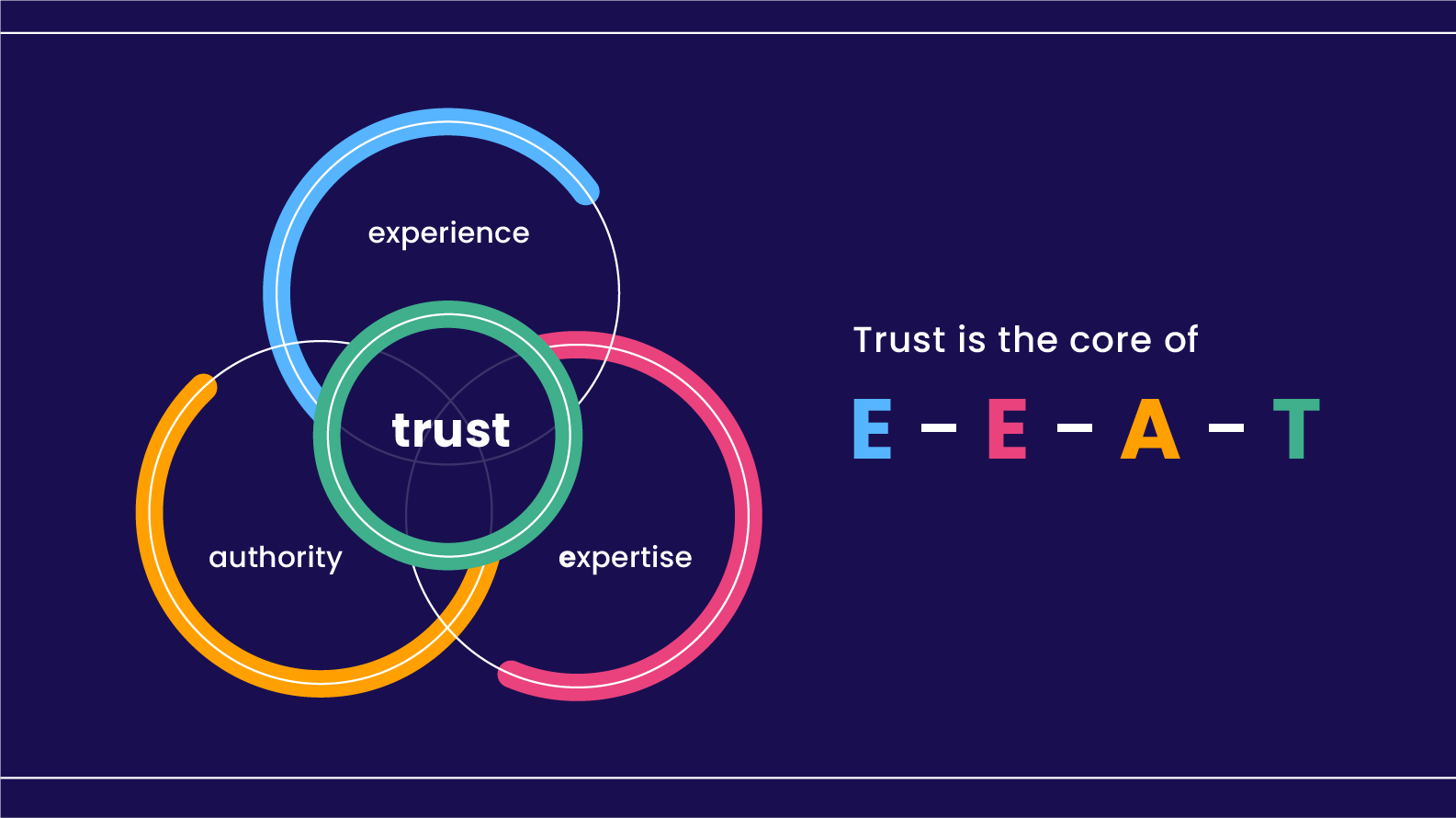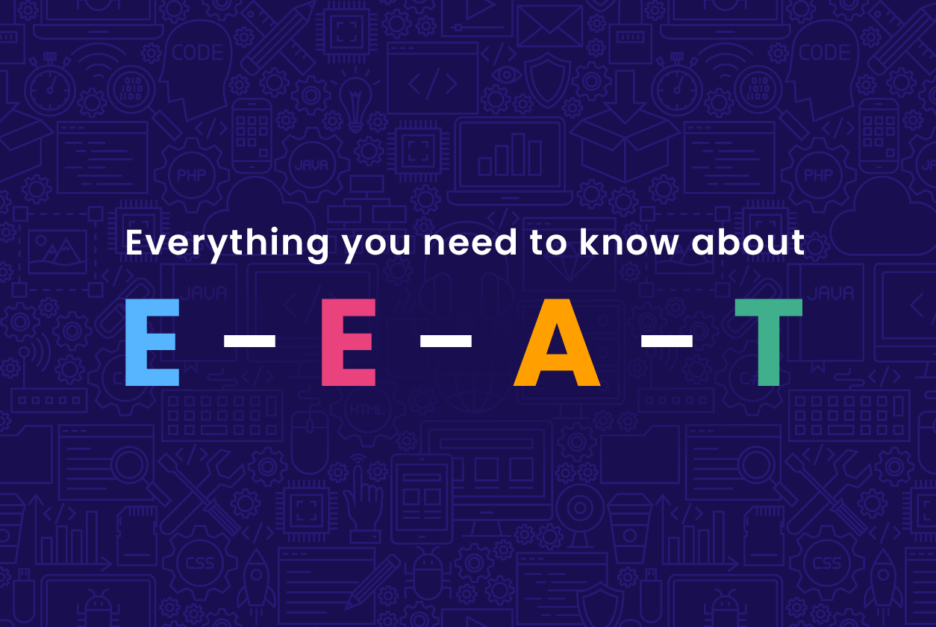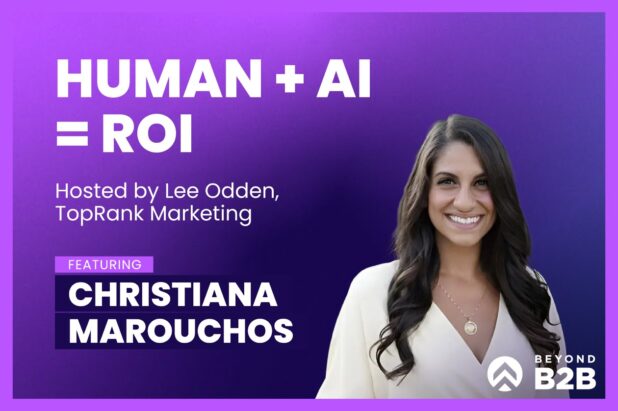With so much content on the web, and generative AI only adding to the noise, Google is laser-focused on helping searchers find results that are meaningful, valuable, and helpful. Clearly, the pioneering search engine recognizes that its future as a useful tool depends on surfacing content that cuts through the clutter and satisfies intent, which is to say: Google will favor the content that best answers the question behind the query
Google’s E-E-A-T guidelines are the most transparently documented set of recommendations that brands can use to navigate the evolving search landscape while staying relevant and visible, and they come directly from the source.
These guidelines are core to our SEO content philosophy at TopRank Marketing, not only because they align to the priorities of the world’s biggest search engine but also because the underlying principles serve as durable best practices for clearly demonstrating value to your audience with content marketing.
Because they are so important, let’s take a deep dive into the practical implications of E-E-A-T for SEO, how it works, and why it matters.
Curious to know if your website follows the guidelines?
What is E-E-A-T?
E-E-A-T stands for Experience, Expertise, Authority, and Trustworthiness. E-E-A-T guidelines are leveraged by content creators, but were initially established as part of Google’s ongoing efforts to improve the quality of their own search results and to prioritize people-first content. E-E-A-T guidelines are a baseline for how we measure a site’s worthiness of earning visibility in the search engine results pages (SERPs).
While Google states that E-E-A-T guidelines do not directly influence rankings, the criteria are “used by our search raters to help evaluate the performance of our various search ranking systems.” And importantly: “They can also be useful to creators seeking to understand how to self-assess their own content to be successful in Google Search.”

Here’s an overview of what each facet of the E-E-A-T framework means in terms of shaping your content.
Experience
Think of this as “been-there-done-that” credibility. When you’re creating content, ask yourself: Have I actually experienced what I’m talking about? Does it come through to the audience? Demonstrating experience is one of the best ways to differentiate from anything AI could produce.
Example: If you’re writing a guide about hiring technology, include relevant case studies or quotes from actual HR professionals to show this specific audience you understand their world.
Expertise
It’s all about knowing your stuff — whether through formal qualifications or a history of covering your topical area effectively and thoroughly. Google loves content that feels like it’s coming from someone who really knows what they’re talking about. For B2B buyers, fostering this perception is essential.
Example: If you’re discussing SEO strategies, back it up with data, industry insights, and proven results you’ve achieved. Being an expert doesn’t mean using fancy jargon — it means breaking things down clearly so your audience can trust your advice.
Authoritativeness
Authority is about your reputation. Are you seen as a go-to person, brand or website for your topic? Building authority takes time and cannot be accomplished with a single piece of content. It’s like earning a great reputation in real life.
Example: If you want to be known as an authority within your specific category, ensure you are consistently creating content on key topics, earning backlinks from trusted sites, and being active in your niche community (e.g. guest blogs, podcasts, webinars). Third-party signals — other sources vouching for your credibility — are crucial.
Trustworthiness
This one’s the glue holding everything together. Within E-E-A-T guidelines, Trustworthiness is all about being transparent, accurate, and reliable. And demonstrating your experience, expertise, and authoritativeness will also demonstrate how trustworthy you (and your site) are. According to Google, “Trust is the most important member of the E-E-A-T family because untrustworthy pages have low E-E-A-T no matter how Experienced, Expert, or Authoritative they may seem.”
Example: No matter what you’re writing about or who you’re writing it for, you can demonstrate trust by using secure websites (HTTPS), clearly stating who’s behind the content, and citing sources.
A brief history of E-E-A-T guidelines
Google originally introduced this concept in 2014, when they first publicly made it part of their Search Quality Guidelines. Back then, the acronym was simply E-A-T (Expertise, Authoritativeness, Trustworthiness).
The framework gained prominence in response to the increasing prevalence of low-quality, inaccurate or misleading content — specifically relating to critical topics within the YMYL category. YMYL (Your Money, Your Life) refers to content that can have a significant impact on a person’s life, such as information pertaining to health, finance and legal matters.
Over the years, Google has continually tweaked and refined their guidelines for people-first content, including the addition of Experience as a factor in 2022, changing the acronym to E-E-A-T or Double-E-A-T, as it’s now known.
Though they’ve been around for a while, Google’s E-E-A-T guidelines are getting more attention now because the internet is overflowing with content, including a lot of misinformation and AI-generated material, making it harder to find trustworthy and accurate information. With users demanding credible answers and pressure mounting to combat low-quality content, these principles have become guiding lights for creators that want to rank in search and resonate with human audiences.
“Many of us have experienced the frustration of visiting a web page that seems like it has what we’re looking for, but doesn’t live up to our expectations. The content might not have the insights you want, or it may not even seem like it was created for, or even by, a person. We work hard to make sure the pages we show on Search are as helpful and relevant as possible.” – Danny Sullivan, Public Liaison for Search, Google
For which sites and brands are E-E-A-T guidelines most critical?
Brands that operate in the YMYL category should treat E-E-A-T as a top priority for their content, because these sites are still evaluated most stringently by Google against the guidelines. In B2B, some examples of YMYL companies and solutions might include:
- Financial Services and Solutions: Accounting software, payroll systems, tax prep services, and investment management platforms
- Cybersecurity: Enterprise security software, fraud detection, managed IT services
- Legal and Compliance: Contract management software, compliance tools, and legal advisory firms
- B2B Healthcare and Pharmaceutical: Health IT solutions, telehealth platforms, patient data management
- HR and Workforce Management: Employee benefits, workplace safety training, and mental health programs for employees
Whether you’re in a YMYL category or not, demonstrating expertise, experience, and reliability helps improve search rankings, grows audience confidence, and sets your brand apart in a competitive market. It’s worth noting that brand content tends to be high-stakes throughout the B2B sector, where YCMYJ (Your Company’s Money, Your Job) might be a more apt framing.
And as a reminder: E-E-A-T guidelines give us insight into how Google evaluates content. It stands to reason that the criteria also apply to sites outside of the YMYL category because at the end of the day, the algorithm is trying to mimic human decision-making.
Why E-E-A-T qualities drive SEO and content performance
Sources that embody the principles of E-E-A-T are more likely to be viewed by Google as trustworthy, and thus more likely to gain traction in relevant search results. Google has been open about that. But we talk so much about these principles because the advantages of building around them goes beyond performance in SEO.
When you focus on Experience, Expertise, Authoritativeness, and Trustworthiness, you’re naturally putting your audience’s needs first. Think about it — people don’t just want content that sounds good; they want advice, answers, or insights they can depend on. By weaving your firsthand experience into your content, you make it relatable. By showcasing your expertise, you make it valuable. And by backing it with authority, you make it credible.
Demonstrating experience, expertise, and authority consistently across your content ecosystem makes your domain more trustworthy overall, and more likely to be considered a reliable place to go for the answers that people (and Google) want to see for the search queries relevant to your audience.
Google loves content that helps users. The more your content resonates with real people — by answering their questions, solving their problems, or addressing their pain points — the more Google rewards you with better visibility. It’s a win-win.
And as I often like to point out, the underlying premise of E-E-A-T and people-first content is inherently geared toward gaining visibility on almost any content platform. For example, LinkedIn’s latest algorithm updates were focused on prioritizing specialized knowledge and insights from sources that demonstrate a track record in their subject matter area. Meanwhile, citing quality sources and featuring verifiable expertise in content is also a proven way to show up in generative engines.
How to improve your site’s E-E-A-T score
You’ll want to think big-picture when evaluating your brand’s E-E-A-T standing. It’s not something you accomplish with one specific piece of content; Google evaluates a source’s larger footprint in making these assessments.
Here are some steps you can take to improve your website’s favorability in the scope of E-E-A-T:
- Showcase your experience and track record. Share detailed case studies, testimonials and success stories when possible. Try to orient them more toward the audience (why this matters to you) versus the source (why this makes us look good).
- Credit team members and build their expertise. Include bylines in your content that link to author bios where readers can learn more about the person behind the perspective. Encourage employees to develop their own personal brands through thought leadership, speaking engagements, podcast appearances, and so on.
- Earn and demonstrate industry recognition. Make it easy for visitors to discover your company’s awards or certifications. Create content that’s so good you gain mentions and backlinks from influential and respected industry voices.
- Ensure your website sends trust-building signals. Use secure HTTPS, clearly display contact information, and maintain an up-to-date privacy policy. Even small touches like clearly explaining what will happen when someone fills out a form can go a long way toward cultivating a transparent experience that builds trust.
- Make sure your content is accurate, up-to-date and actionable. Genuinely helpful and high-quality content is essential. Keep a close eye on key pages that become outdated. Track and remove non-functional links. Avoid citing junk sources (i.e. listicles). Update timely content with fresh insights and info.
Benefits of E-E-A-T audit and knowing your E-E-A-T score
E-E-A-T audits provide a way to systematically evaluate how effectively your website is sending trust-building signals to search engines and visitors, so you can find opportunities to get better. This is an investment in both your SEO and your brand reputation.
Conducting an E-E-A-T audit and knowing your E-E-A-T score across each category, then taking action on the resulting insights can help you:
- Improve search rankings
- Attract more relevant and qualified organic traffic
- Enhance your credibility
- Increase engagement on your site
- Boost conversion rates
- Strengthen your competitive advantage
- Fortify compliance in regulated industries
- Build trust and loyalty with your audience
- Future-proof against upcoming algorithm and platform changes
Want to get started with your journey for an E-E-A-T optimized web presence? For a limited time, TopRank Marketing is offering a free E-E-A-T mini-audit.
See if Google trusts your website.



